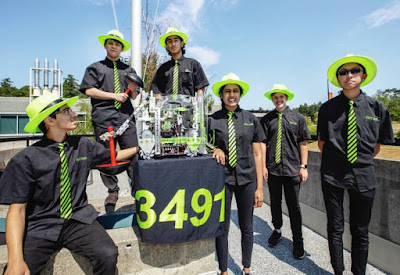A group of Greater Victoria high school students is competing with teams from around the world in the Asia-Pacific FIRST Tech Challenge Championships, a robotics competition for students in Grades 7 to 12, observes Pedro Arrais, Authors, Times Colonist.
The FIX IT Robotics team is made up of seven students from high schools in the region, competing by video link from the Vancouver Island Technology Park on the time schedule for Australia, where the competition is based...
The group has designed, constructed and programmed a robot — roughly the size of a microwave oven — using a kit of parts...
The team’s lead programmer is Ines Khouinder, 18, who just graduated from St. Margaret’s School. She assumed the position when she was in Grade 10 after her predecessor graduated from Grade 12.
Although she knew that STEM — Science Technology Engineering and Mathematics — was a male-dominated field, Khouinder said she was determined to join. She had become interested in computer programming after a summer program in Grade 9.
Source: Times Colonist





















